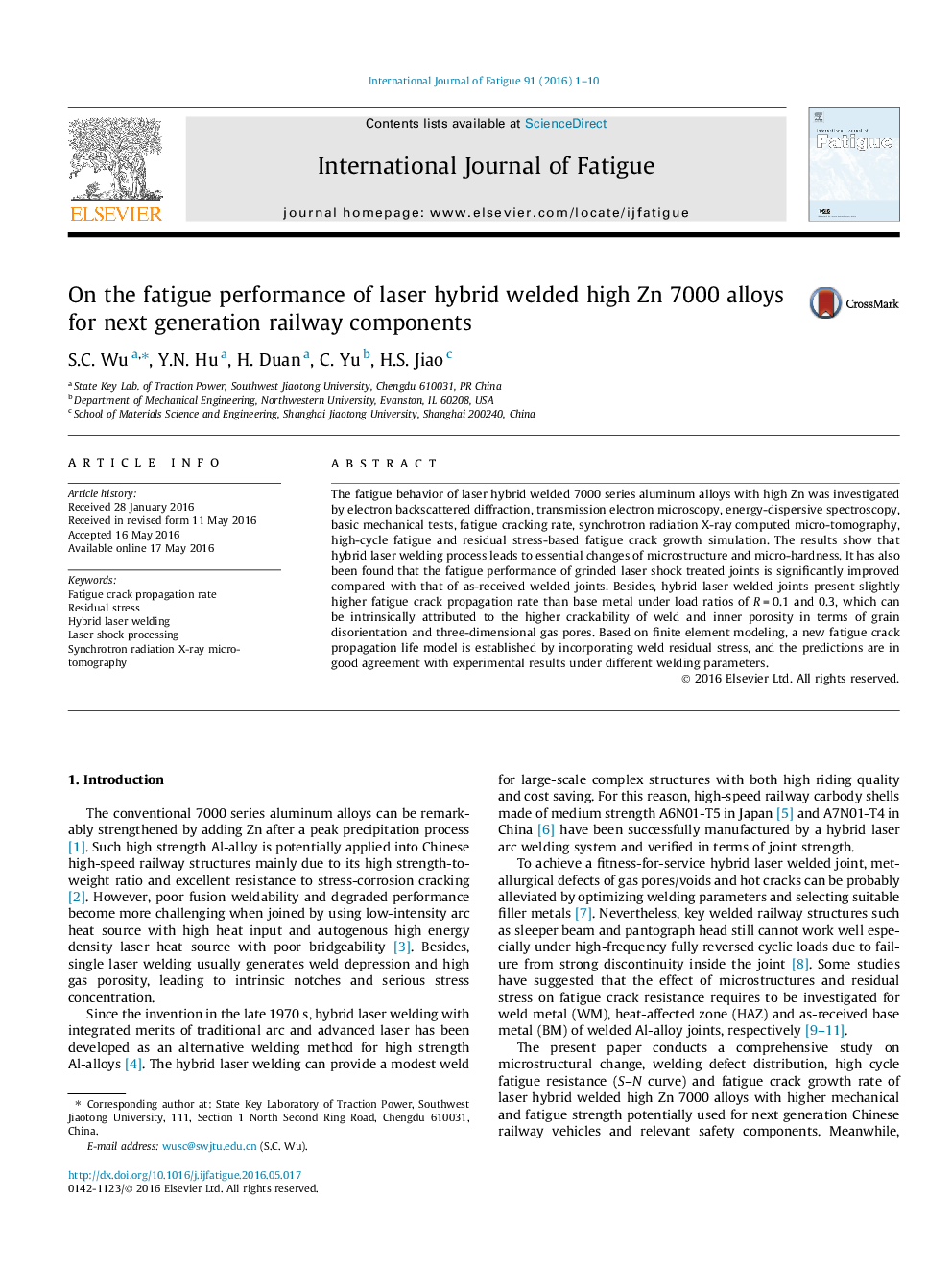| Article ID | Journal | Published Year | Pages | File Type |
|---|---|---|---|---|
| 7171684 | International Journal of Fatigue | 2016 | 10 Pages |
Abstract
The fatigue behavior of laser hybrid welded 7000 series aluminum alloys with high Zn was investigated by electron backscattered diffraction, transmission electron microscopy, energy-dispersive spectroscopy, basic mechanical tests, fatigue cracking rate, synchrotron radiation X-ray computed micro-tomography, high-cycle fatigue and residual stress-based fatigue crack growth simulation. The results show that hybrid laser welding process leads to essential changes of microstructure and micro-hardness. It has also been found that the fatigue performance of grinded laser shock treated joints is significantly improved compared with that of as-received welded joints. Besides, hybrid laser welded joints present slightly higher fatigue crack propagation rate than base metal under load ratios of RÂ =Â 0.1 and 0.3, which can be intrinsically attributed to the higher crackability of weld and inner porosity in terms of grain disorientation and three-dimensional gas pores. Based on finite element modeling, a new fatigue crack propagation life model is established by incorporating weld residual stress, and the predictions are in good agreement with experimental results under different welding parameters.
Related Topics
Physical Sciences and Engineering
Engineering
Mechanical Engineering
Authors
S.C. Wu, Y.N. Hu, H. Duan, C. Yu, H.S. Jiao,
